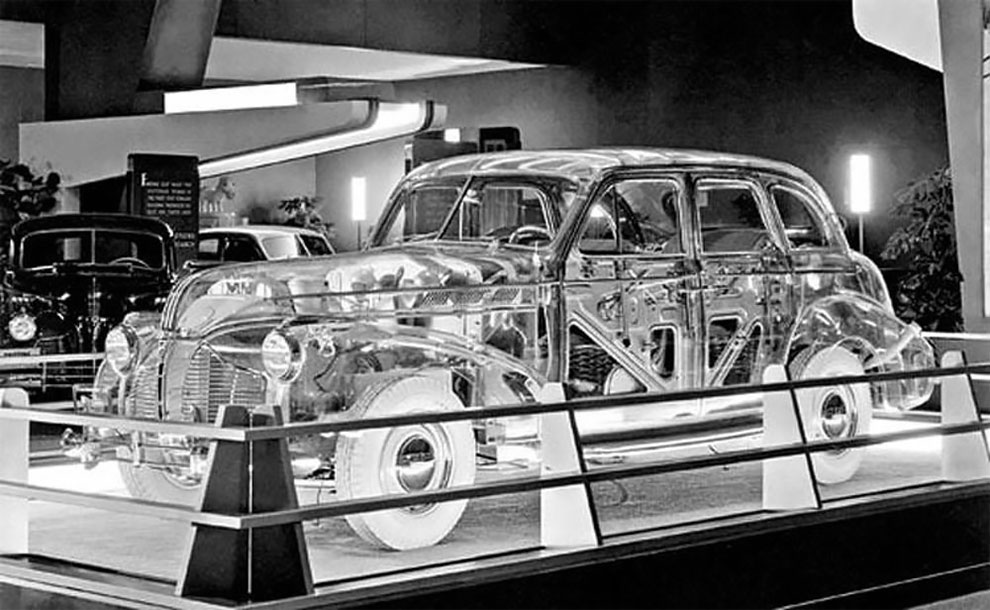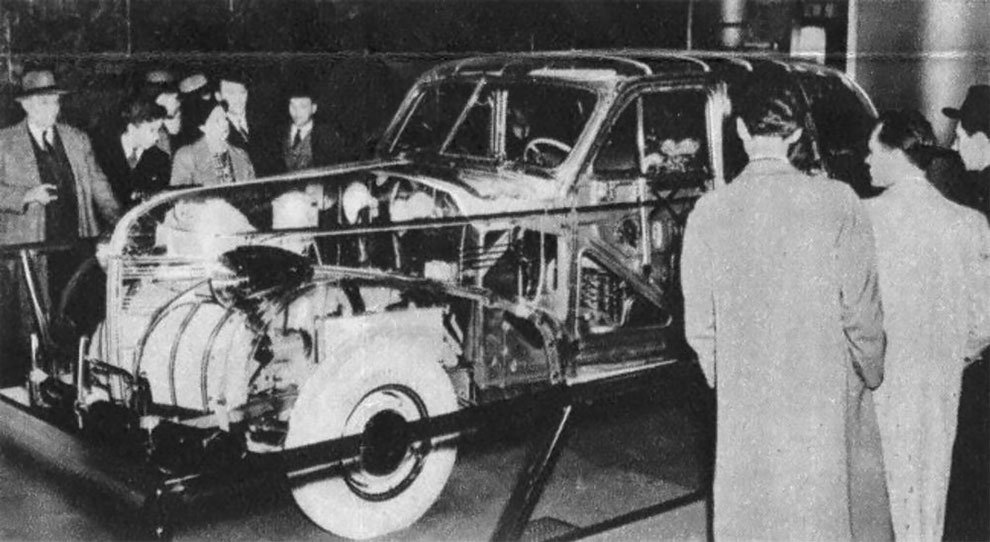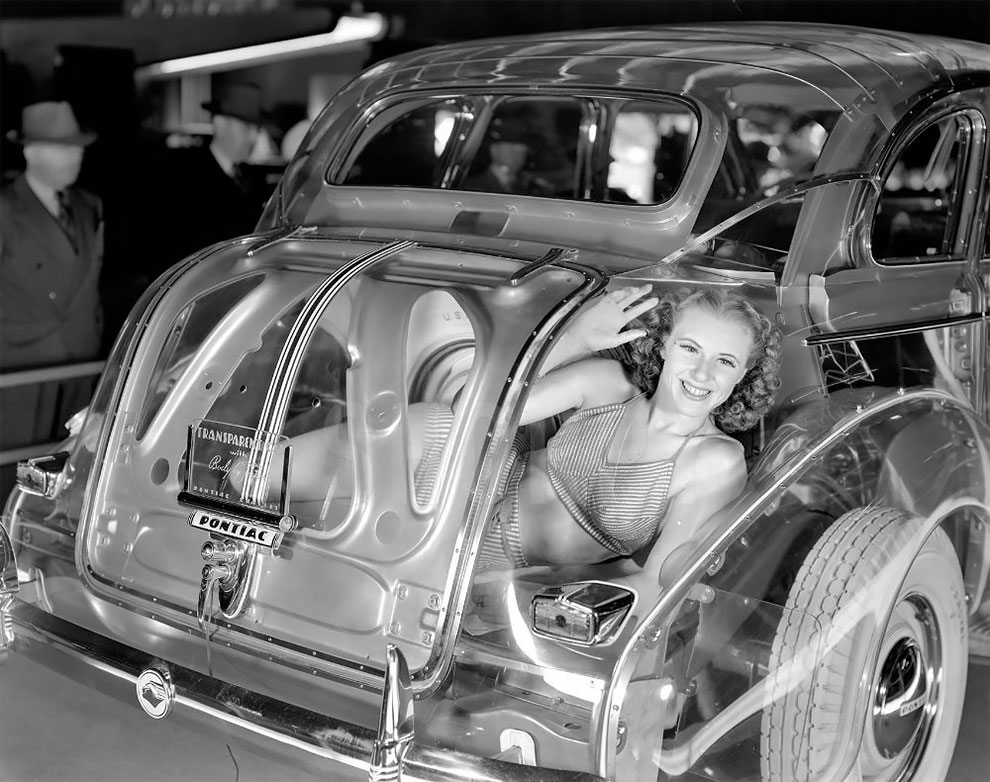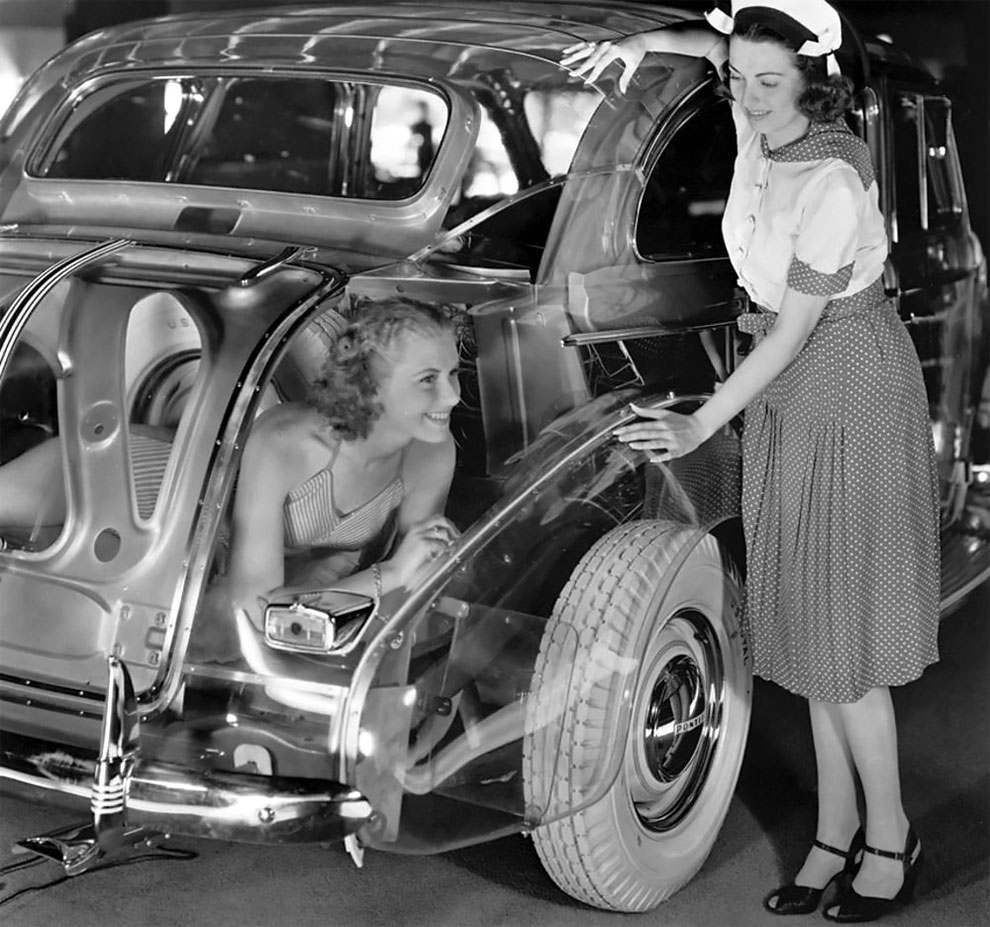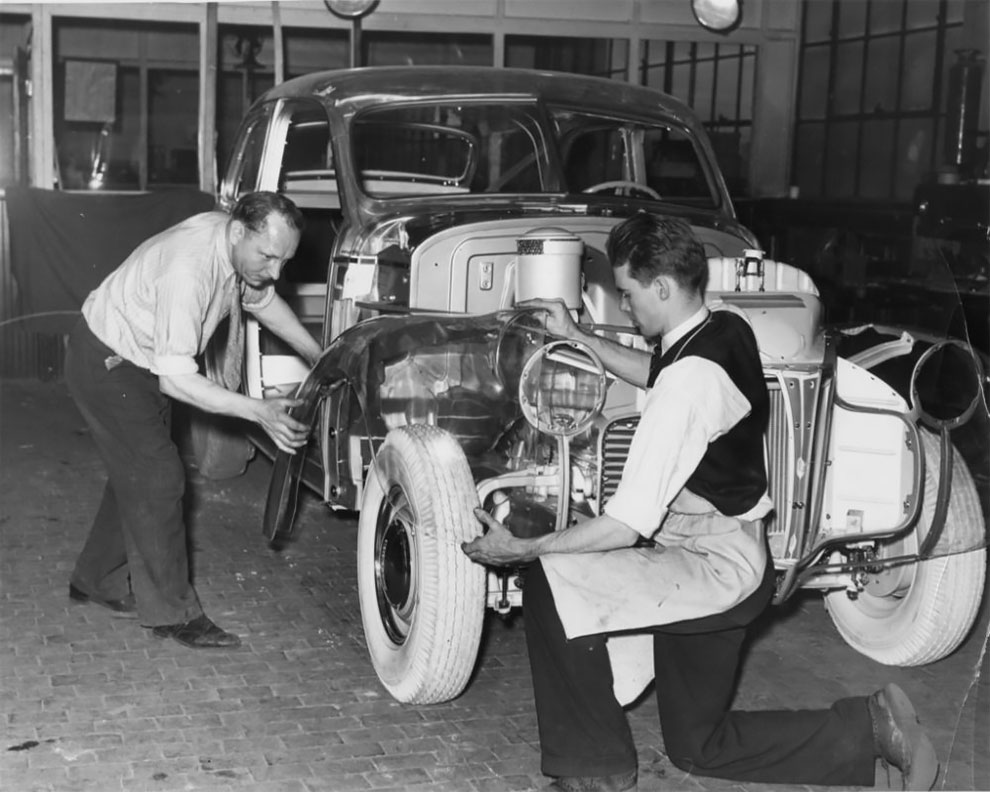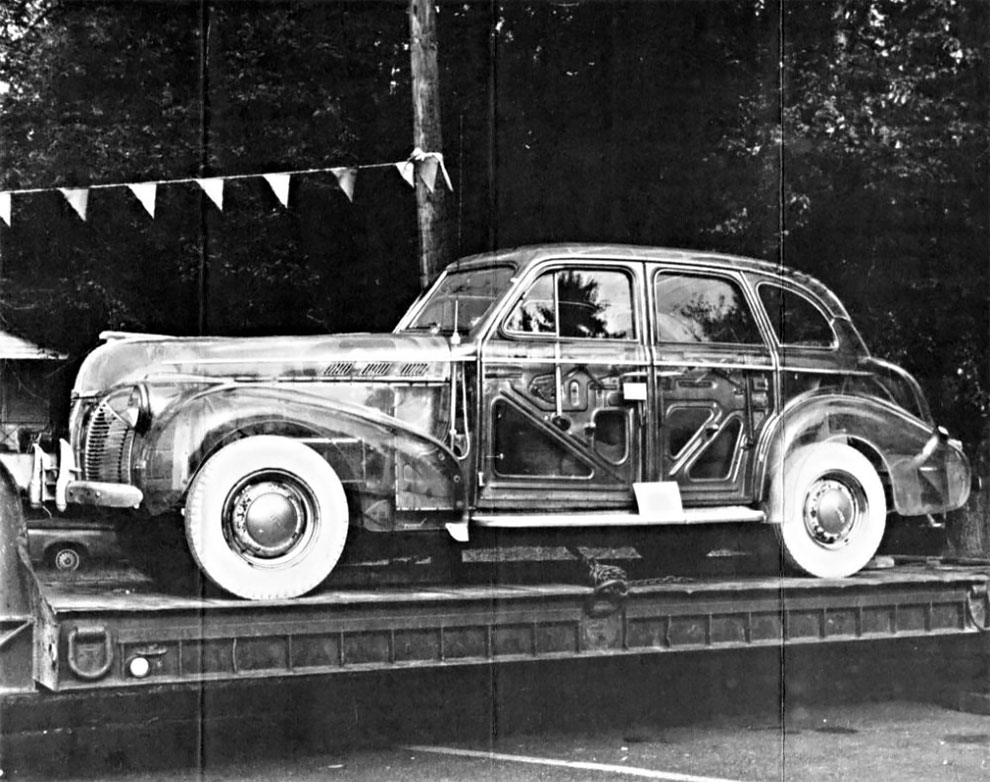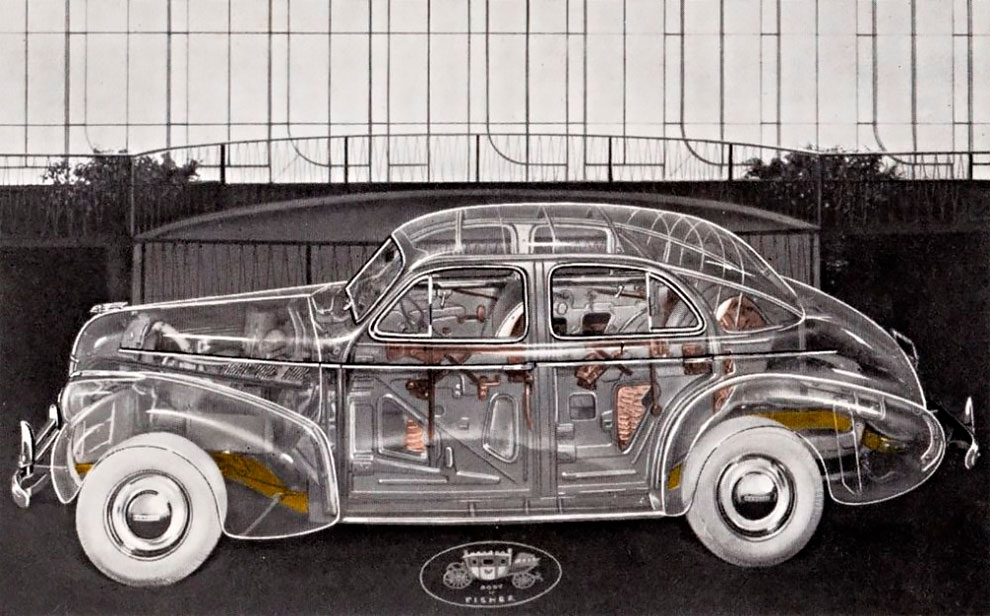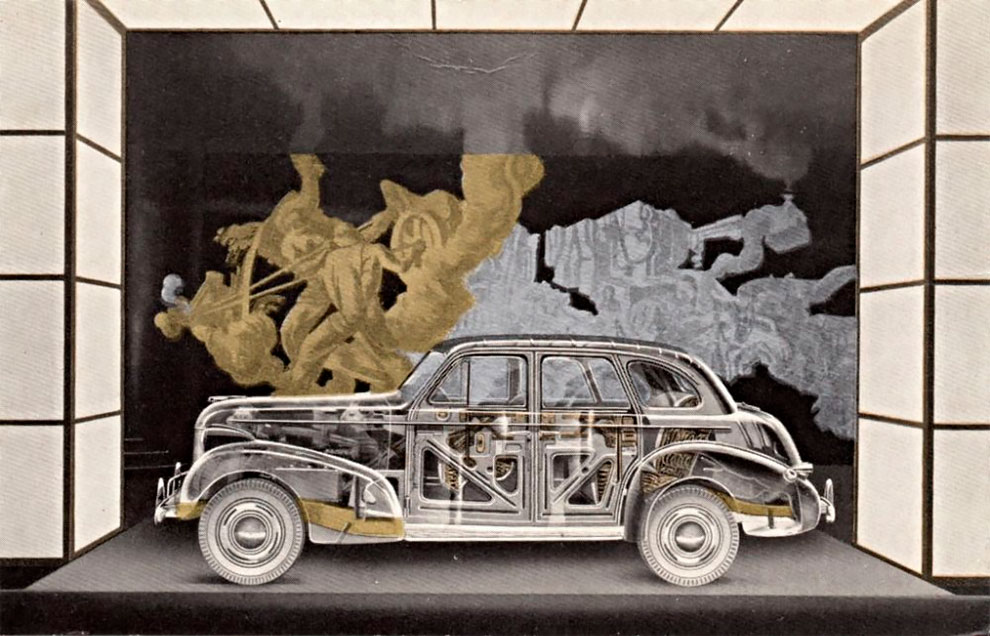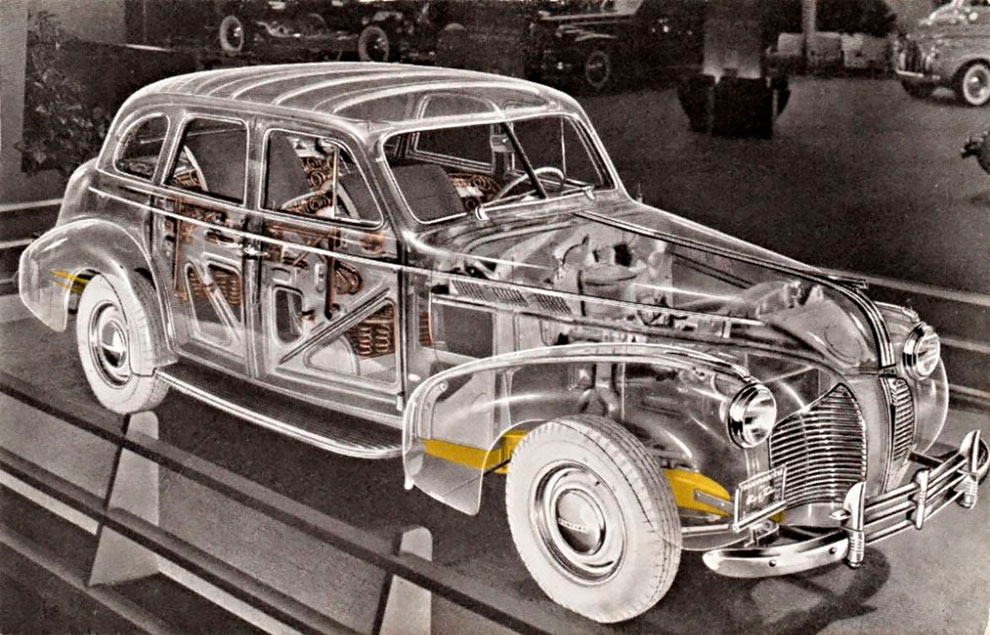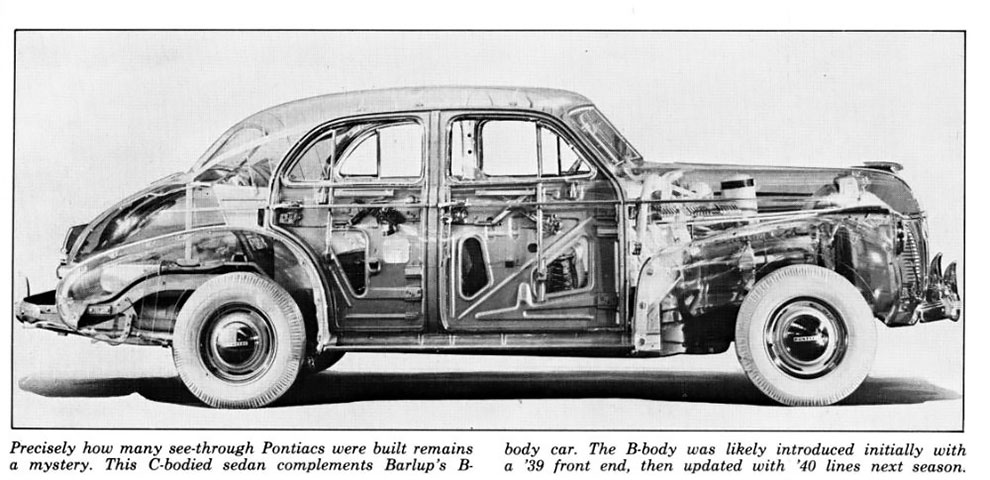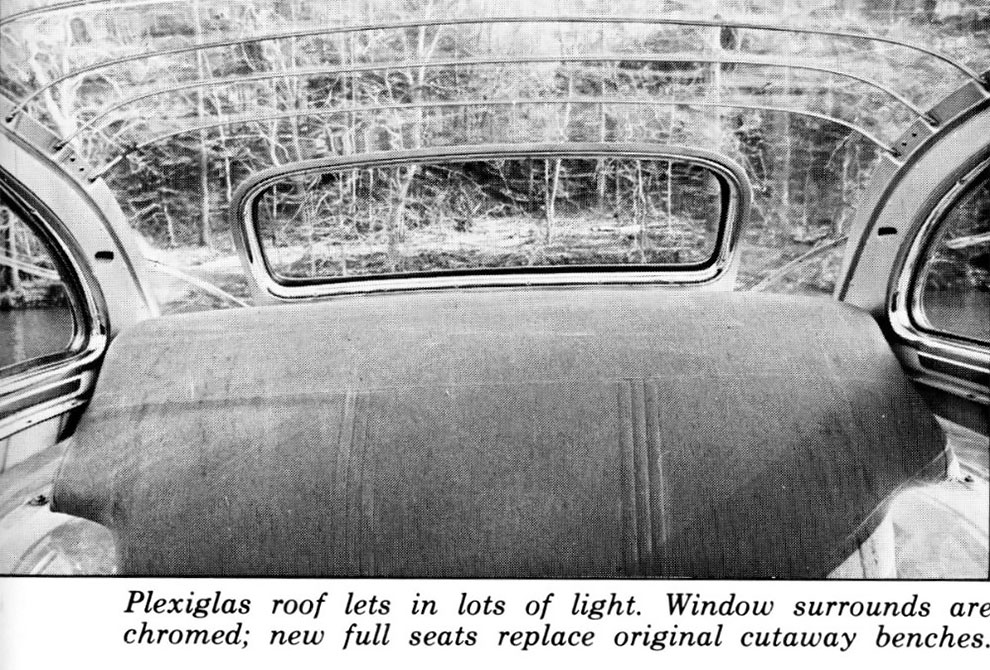1939 Pontiac Plexiglas “Ghost Car”: The First Full-Sized “See-Thru” Car Ever Made In America

Visitors to the 1939 New York World’s Fair Highways and Horizons exhibit by General Motors were dazzled by the display of a one-of-a-kind 1939 Pontiac Deluxe Six Plexiglas car. This specially fabricated see through vehicle was constructed of acrylic plastic (quite an advancement at the time) which made visible the many parts that created the Deluxe Six. All screws and fasteners were chrome-plated for dramatic effect.
h/t: vintag.es

The “Ghost Car” also appeared at the 1940 New York World’s Fair and proudly showcased its newly redesigned front end and grill. A second 1940 “Ghost Car” was built for the 1940 Golden Gate Exposition on Treasure Island, near San Francisco.

On the chassis of a 1939 Pontiac Deluxe Six, GM collaborated with Rohm & Haas, the chemical company that had recently developed Plexiglas. The world’s first transparent acrylic sheet product, Plexiglas was a serendipitous discovery arising from Rohm & Haas’ work with laminated safety glass.

Using drawings for the Pontiac four-door Touring Sedan, Rohm & Haas constructed an exact replica body using Plexiglas in place of the outer sheet-metal. The structural metal underneath was given a copper wash, and all hardware, including the dashboard, was chrome plated. Rubber moldings were made in white, as were the car’s tires. It reportedly cost $25,000 to build – an astronomical figure in those days.

According to the GM Heritage Center, a second car, on a Torpedo Eight chassis, was hurriedly constructed for the 1940 Golden Gate Exposition on Treasure Island, a man-made island in San Francisco Bay.
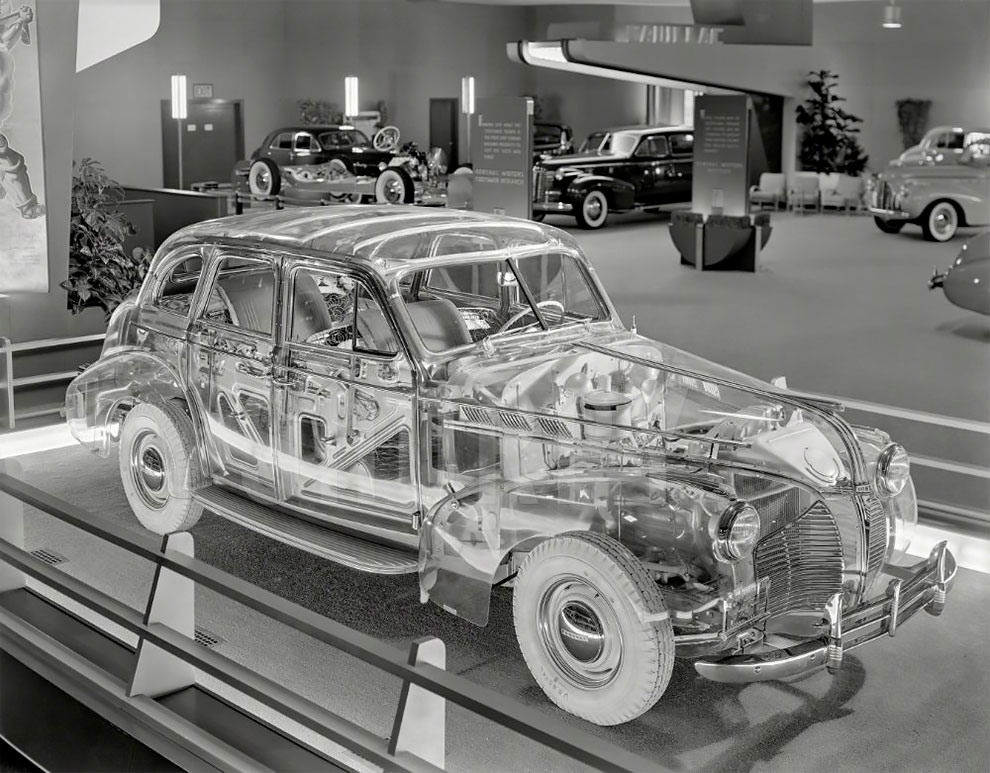
After its World’s Fair appearance the Smithsonian Institution kept the Pontiac show car on display from 1942-1947. By the late 1940s, however, the styling on the car had been deemed old and obsolete by the viewing public and the exhibit was changed.

Later, the show car would be old and resold to a number of Pontiac dealerships – mostly for the promotional value. It first went to the H&H Pontiac dealership of Gettysburg, Pennsylvania; and in 1962, it was sold to another Pontiac dealership and later to a car collector by the name of Don Barlup.

In conclusion, some automotive historians have said that Pontiac’s Ghost Car is credited as the first transparent car in America. Today, this unique show car is still a very rare model and a great conversation story for many Americans.
